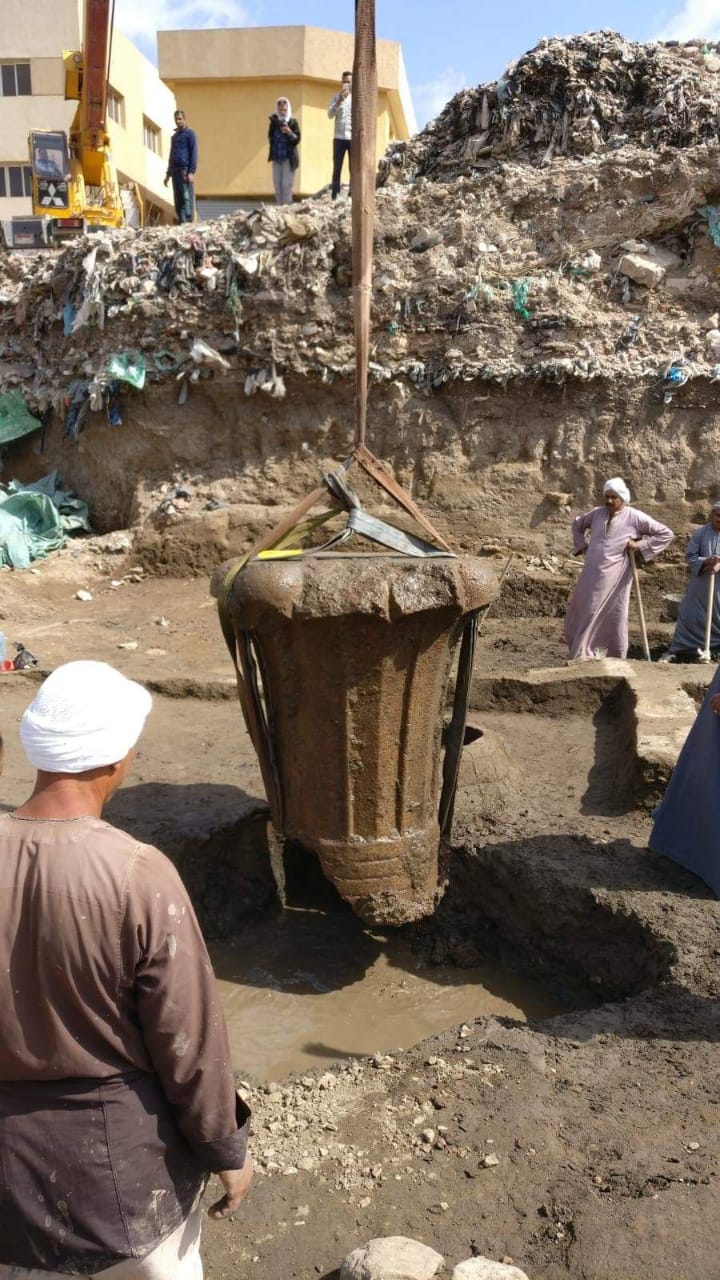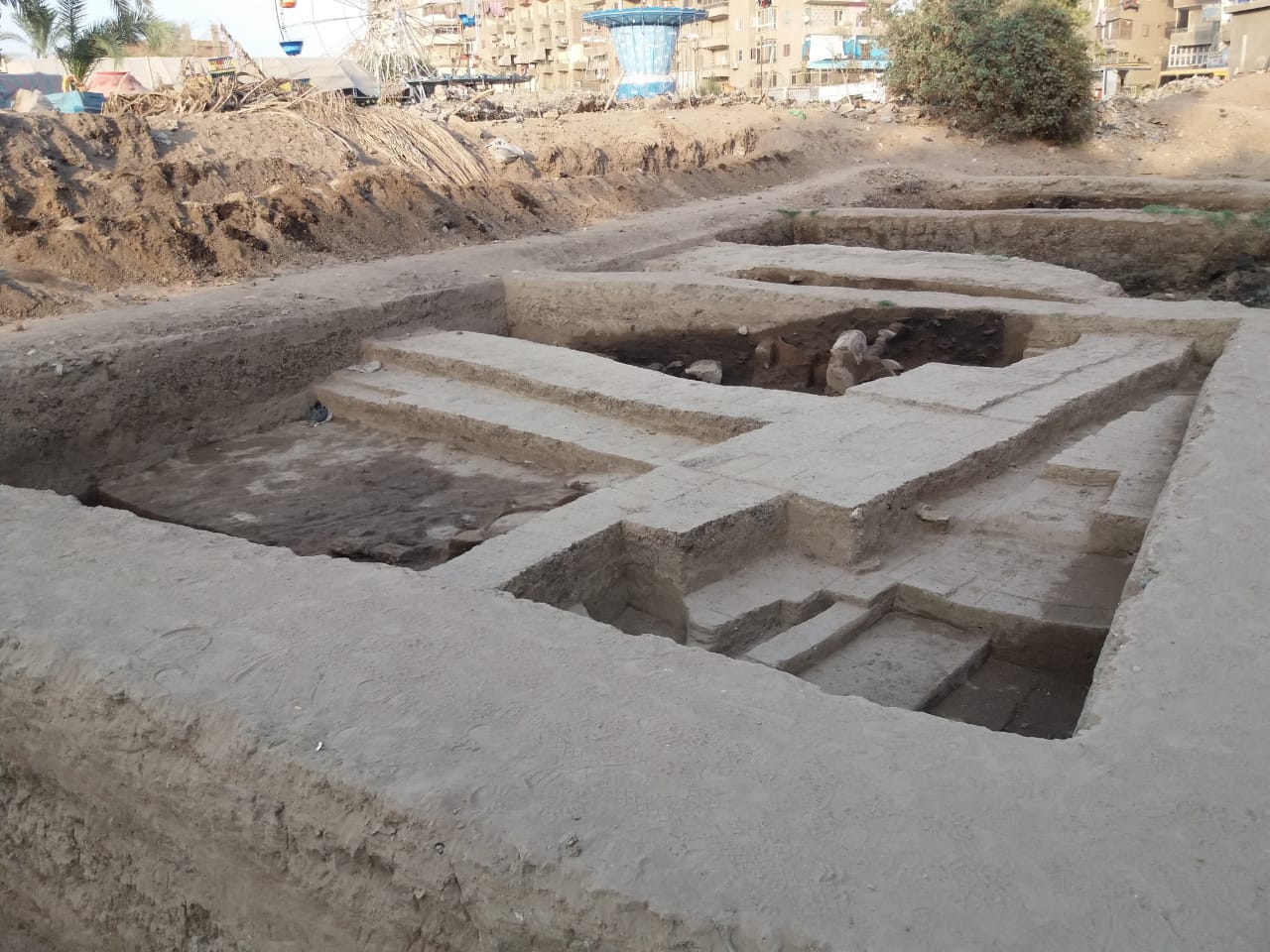البعثة المصرية الألمانية تكتشف بقايا معبد الشمس.. اعرف اكتشافات حى المطرية

ثقافة أول اثنين:
تعمل الدولة المصرية على تسهيل عمل البعثات المصرية والأجنبية داخل المواقع الأثرية، للكشف عن مزيد من القطع الأثرية التى تنتمى لعصور تاريخية مختلفة، فمؤخرًا نجحت البعثة الأثرية المصرية الألمانية المشتركة بين المجلس الأعلى للآثار ومتحف جامعة ليبزج في الكشف عن مزيد من بقايا معبد الشمس، وذلك أثناء استكمال أعمال حفائرها في الموسم الحالي بالمنطقة المحيطة بمتحف المسلة المفتوح من الناحية الغربية والشمالية والجنوبية بمدينة اونو (هيلوبوليس) بمنطقة المطرية.
ومنطقة المطرية تحتوى على الكثير من الكنوز الأثرية، إذ أن تلك المرة ليست الأولى فى استخراج عدد من القطع الأثرية، فتعمل البعثة المصرية الألمانية بشكل متواصل خلال مواسم الحفائر الماضة، ونجحت فى الكشف عن قطع أثرية فريدة.
ورشة أثرية
أحجار جيرية منقوشة
فى 2018، اكتشفت البعثة المصرية الألمانية عن كميات كبيرة من أجزاء أحجار جيرية منقوشة تعود إلى عصر الأسرة الثانية عشر والأسرة العشرين والعصر المتأخر، وذلك بالقرب من وحدة لحرق الأحجار لصناعة الجير فى ذلك الوقت حيث أن جميع الأعمال تركزت هذا الموسم فى منطقة الورش الصناعية التى ترجع إلى ما بين القرن الرابع و القرن الثانى قبل الميلاد (العصرين المتأخر والبطلمى)، كما عثرت البعثة ايضا على بعض أجزاء تماثيل.
العثور على قطع أثرية معاد استخدمها
فى 2019، عثرت البعثة الأثرية المصرية الألمانية المشتركة العاملة بمنطقة آثار المطرية، على العديد من اللقى الاثرية خلال أعمالها فى موسم 2019، حيث تم العثور فى منطقة المعسكر، والتى تحتوى على ورش صناعية تؤرخ بالفترة من القرن السادس حتى الثانى قبل الميلاد، على العديد من القطع الأثرية المعاد استخدامها فى الورش، والتى تمثل أجزاء من عناصر المعبد المختلفة، وتتكون بعض هذه الأجزاء من تماثيل ملكية من الأسرة الـ18 وأجزاء من قطع منقوشة من الحجر الجيرى المحروق، كما عثرت البعثة أيضا فى الناحية الغربية من الموقع، على مبنى من العصر البطلمى يحتوى على أفران لصناعة الخبز.

القطع الأثرية المعاد استخدامها فى الورش
كتل من البازلت
ففى 05 نوفمبر 2021، كشفت البعثة الأثرية المصرية الألمانية، والعاملة بمنطقة آثار المطرية، عن العديد من كتل البازلت والتى تمثل أجزاء من الواجهة الغربية والشمالية لمعبد الملك نختنبو الأول (380-363 قبل الميلاد)، بالإضافة إلى امتداد للمعبد من الناحية الشمالية ربما ليربط معبد نختنبو بالمحور الرئيسى للمعبد.

أحجار جيرية منقوشة
جاء هذا الكشف أثناء قيام البعثة بأعمال الحفر الأثرى بمركز معبد هليوبليس الكبير فى منطقة أثار المطرية، حيث عثرت أيضا على العديد من الكتل التى تمثل أقاليم مصر السفلى ومن بينها المنظر الذى يمثل إقليم هليوبليس، بالإضافة إلى مناظر لأقاليم مصر السفلى الأخرى.





